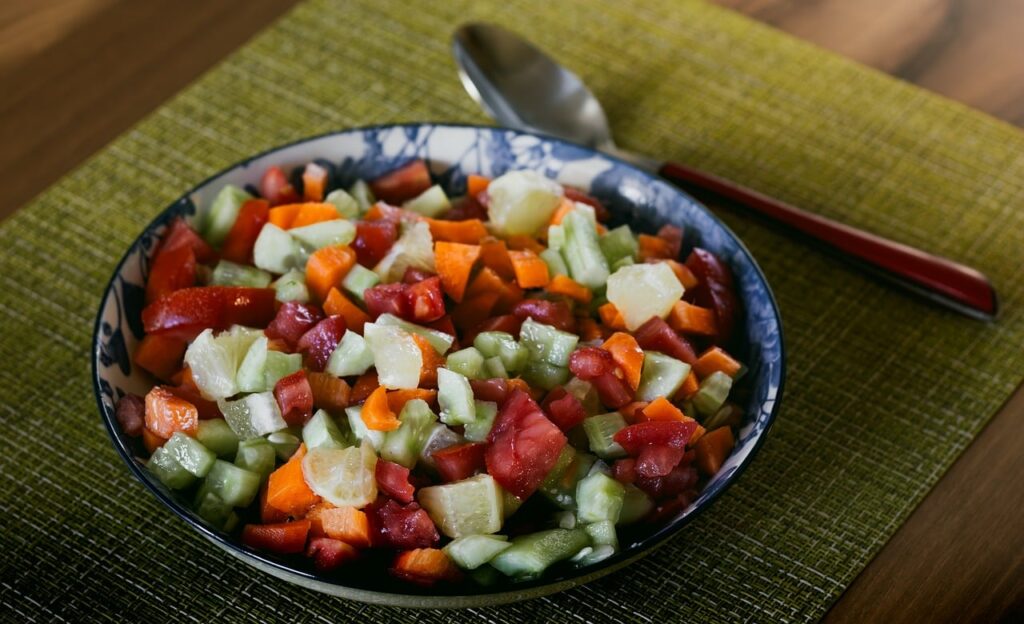The myth that it’s difficult to get enough protein on a vegan diet has long been debunked, but the art of creating satisfying, protein-rich vegan meals deserves attention. Whether you’re an athlete, fitness enthusiast, or simply looking to increase your protein intake, understanding how to compose balanced, protein-packed vegan meals can transform your plant-based journey. Let’s explore how to create delicious, satisfying meals that provide all the protein your body needs.
Understanding Plant-Based Protein
The key to creating high-protein vegan meals lies in understanding how different plant proteins work together. While many plant foods contain protein, combining different sources ensures you’re getting all essential amino acids in adequate amounts. This doesn’t mean you need to combine specific foods at every meal – your body is sophisticated enough to utilize proteins consumed throughout the day.
Building Complete Meals
Creating a satisfying, high-protein vegan meal involves more than just adding protein sources – it’s about building a complete plate that provides sustained energy. A well-constructed meal should include protein-rich ingredients, complex carbohydrates, healthy fats, and plenty of vegetables. This combination ensures you’re not just getting protein but also the fiber, nutrients, and satisfaction that keep you feeling full and energized.
The Power of Preparation
Success with high-protein vegan meals often comes down to preparation. Having cooked legumes, prepared grains, and chopped vegetables ready to go makes it easier to assemble protein-rich meals quickly. Consider spending some time each week preparing basic components that can be mixed and matched throughout the week. This approach not only saves time but also ensures you always have protein-rich options available.
Protein-Rich Building Blocks
Understanding your protein options is crucial for creating satisfying meals. Legumes form the foundation of many high-protein vegan dishes, providing not just protein but also fiber and minerals. Whole grains contribute additional protein while providing sustainable energy. Seeds and nuts add protein along with healthy fats that help keep you satisfied. Incorporating these elements thoughtfully ensures your meals are both nutritious and satisfying.
Beyond Basic Beans and Rice
While a simple bowl of beans and rice provides complete protein, there are countless ways to create exciting, protein-rich meals. Transform chickpeas into flavorful curries or falafels. Use lentils to create hearty stews or veggie burgers. Turn tempeh into savory stir-fries or marinated sandwiches. The possibilities are endless when you start thinking creatively about your protein sources.
The Role of Texture
One often-overlooked aspect of creating satisfying high-protein meals is texture. A meal that offers various textures – creamy, crunchy, chewy – tends to be more satisfying than one that’s monotonous. Consider adding crispy roasted chickpeas to your salads, toasted nuts to your grain bowls, or tempeh crumbles to your stir-fries. These textural elements not only add protein but also make the meal more interesting and satisfying.
Maximizing Protein Absorption
Creating high-protein meals isn’t just about including protein-rich ingredients – it’s also about optimizing their absorption. Certain preparation methods can enhance the bioavailability of plant proteins. Soaking legumes before cooking them, sprouting grains and seeds, and fermenting foods like tempeh and miso can all improve protein absorption. Additionally, combining protein sources with vitamin C-rich foods can enhance iron absorption, which often goes hand in hand with plant-based protein sources.
Strategic Meal Planning
Planning high-protein vegan meals becomes easier when you think in terms of formula rather than strict recipes. Start with a protein base (legumes, tempeh, or tofu), add a whole grain, incorporate plenty of vegetables, and include a healthy fat source. This basic formula can be adapted to create endless variations while ensuring you’re getting adequate protein at each meal.
Morning Protein Power
Starting your day with protein sets you up for success. Consider breakfast options like silken tofu scramble with vegetables and whole grain toast, overnight oats made with protein-rich seeds and nut butter, or smoothie bowls incorporating plant-based protein powder and hemp seeds. These breakfast choices provide sustained energy and help prevent mid-morning hunger.
Lunch and Dinner Solutions
For lunch and dinner, focus on creating balanced plates that provide both immediate satisfaction and sustained energy. A grain bowl topped with marinated tempeh, roasted vegetables, and a tahini dressing provides complete protein along with fiber and healthy fats. A lentil-based shepherd’s pie offers comfort food appeal while delivering significant protein content. Even a simple soup can become protein-rich by including a variety of legumes and whole grains.
Post-Workout Recovery
For those engaged in regular exercise, timing protein intake becomes particularly important. Having a protein-rich meal or snack within an hour of working out helps support muscle recovery and growth. Consider easy options like a smoothie made with plant-based protein powder and banana or a more substantial meal like quinoa and black bean burrito bowl.
Smart Snacking
Snacks can contribute significantly to your daily protein intake when chosen thoughtfully. Keep protein-rich snacks on hand such as homemade energy balls made with nuts and seeds, roasted chickpeas, or hummus with vegetables. These options help maintain steady energy levels between meals while contributing to your overall protein goals.
Seasonal Adaptations
Your high-protein meals can and should change with the seasons. Summer might feature lighter options like chilled bean salads and protein-packed grain bowls, while winter calls for warming lentil stews and hearty casseroles. Working with seasonal produce while maintaining your protein base helps keep meals interesting and economical.
Meal Prep Strategies
Success with high-protein vegan meals often comes down to preparation. Consider these meal prep strategies:
- Cook large batches of legumes and freeze in portions
- Prepare marinaded tofu or tempeh for quick cooking
- Make protein-rich sauces and dressings in advance
- Pre-portion smoothie ingredients in freezer bags
- Batch cook grains and proteins for easy assembly
Common Challenges and Solutions
Even experienced cooks sometimes encounter challenges when creating high-protein vegan meals. Perhaps beans cause digestive discomfort, or family members are resistant to tofu. The key is finding alternatives and preparing proteins in ways that work for you. Start with small portions of legumes and gradually increase them. Experiment with different preparations of tofu and tempeh. Focus on the protein sources that work best for your body and preferences.
Sustainability Considerations
While focusing on protein is important, remember that sustainable eating patterns are key to long-term success. Create meals that you genuinely enjoy and can prepare regularly. Consider the environmental impact of your protein choices and try to include a variety of local, seasonal options when possible.
Remember that transitioning to a high-protein vegan diet is a journey of discovery. Take time to experiment with different protein sources, preparation methods, and combinations until you find what works best for you. Share your protein-rich creations and discoveries with others using #HighProteinVegan #PlantBasedProtein #VeganNutrition.






